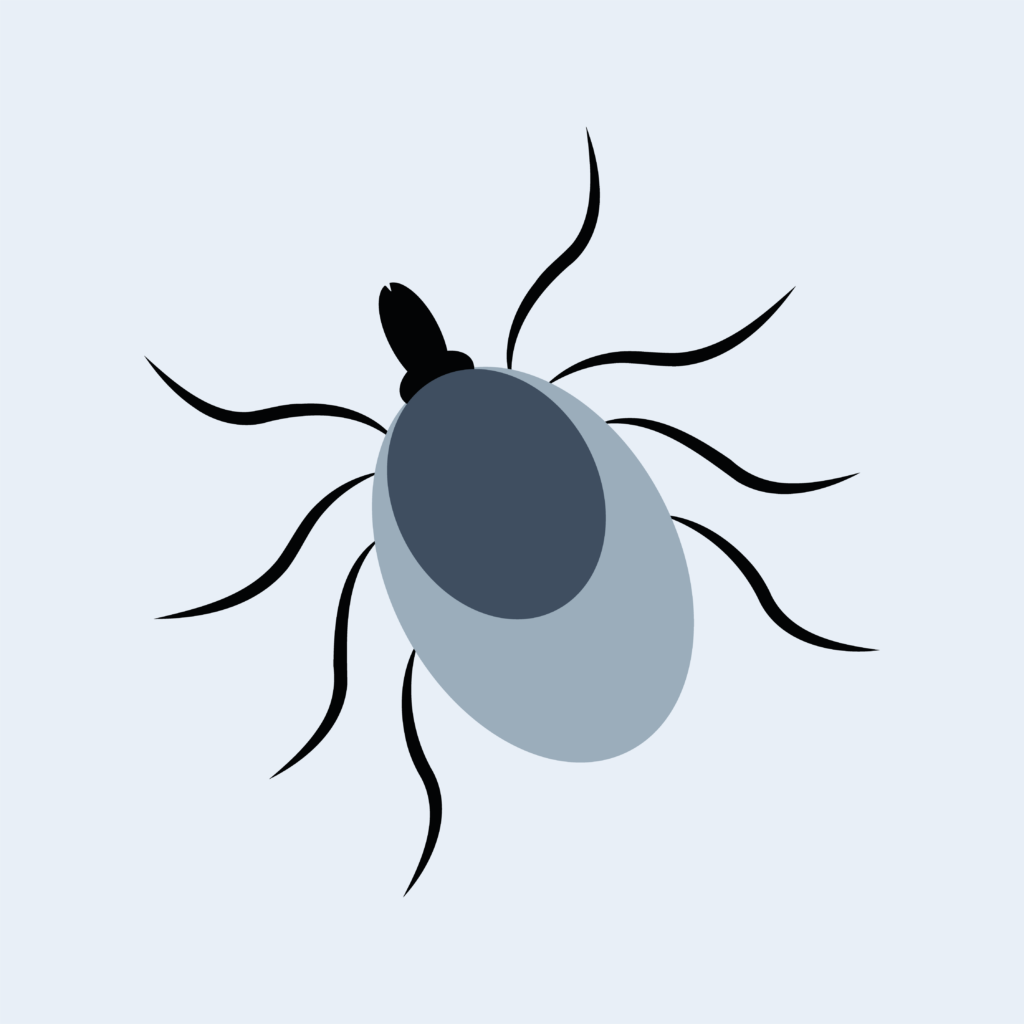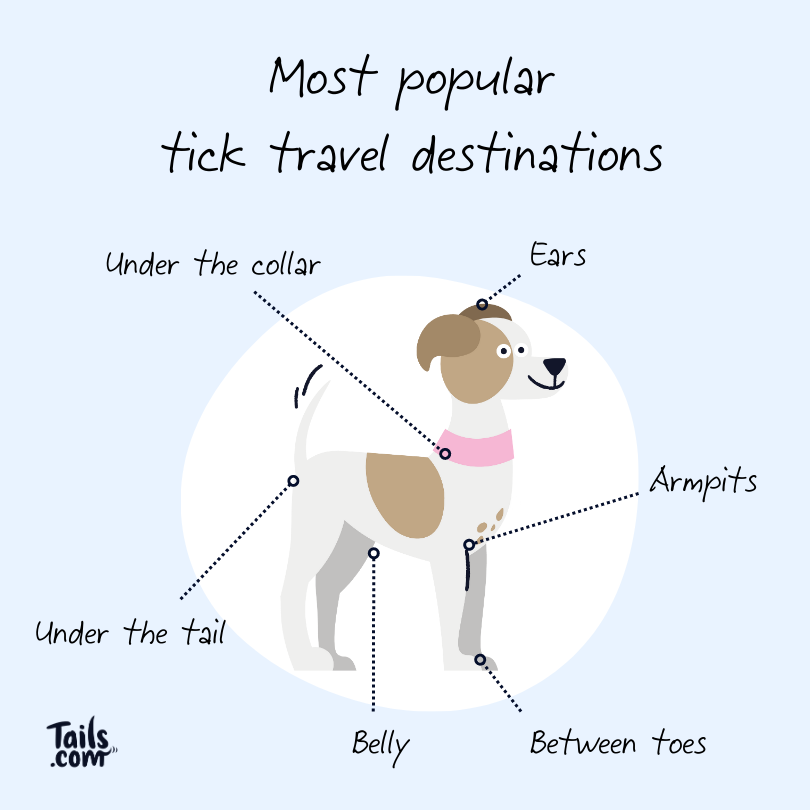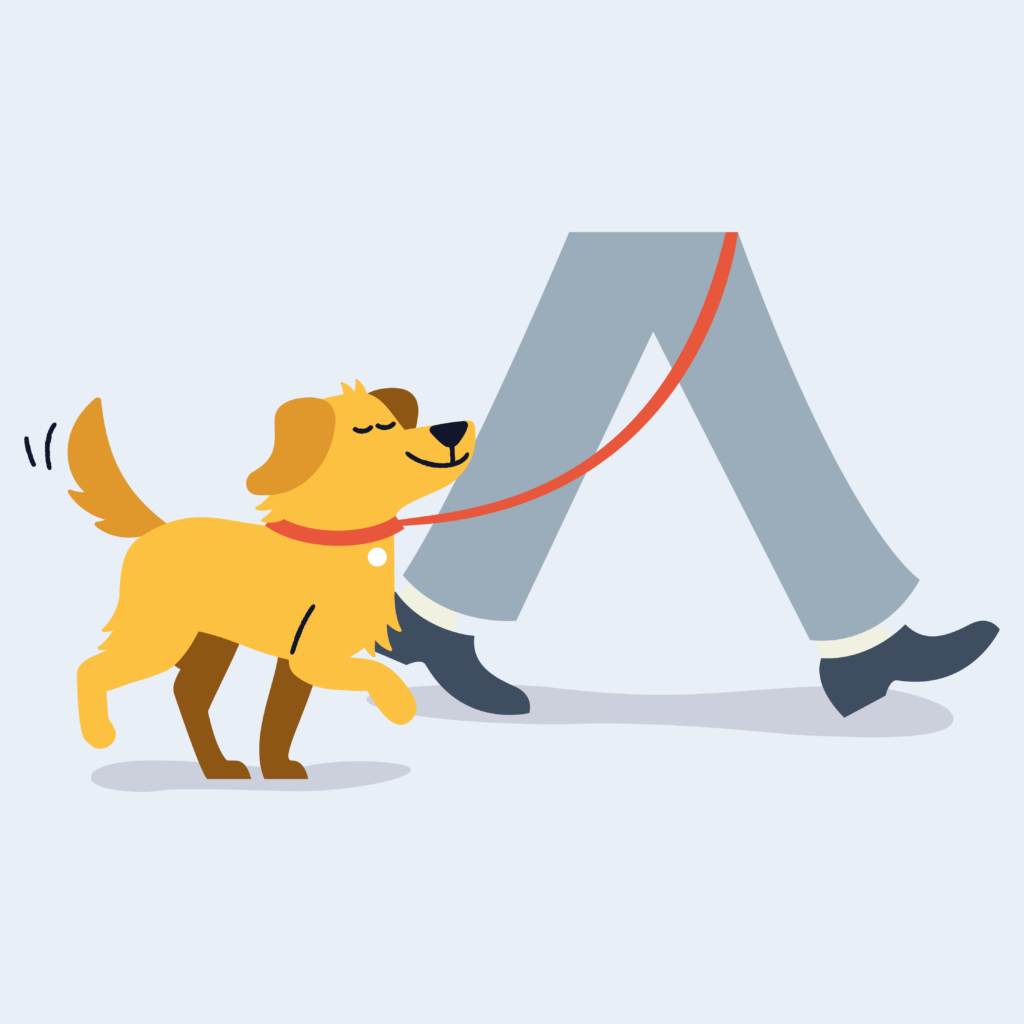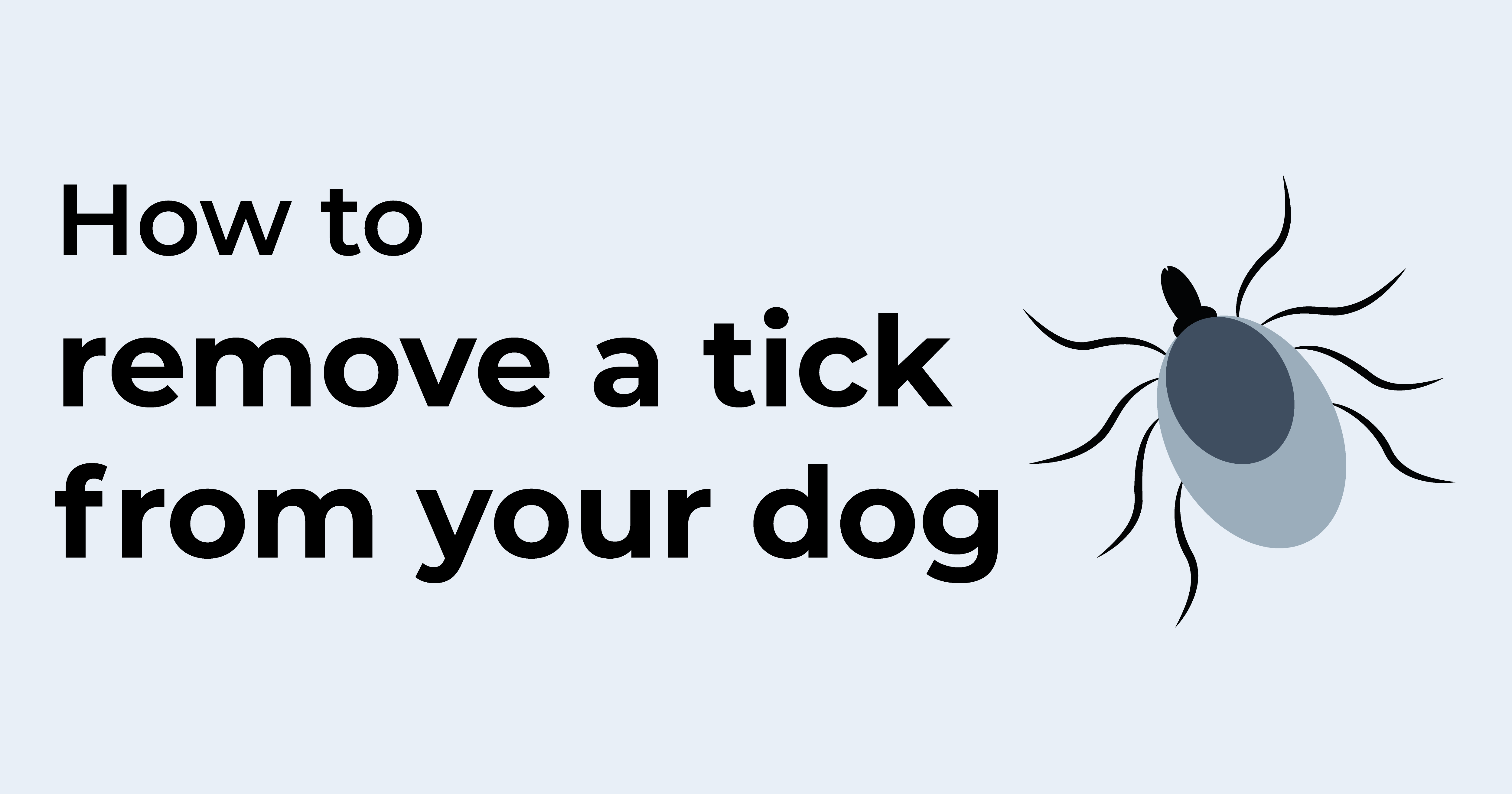Found a shiny grey pea-sized bump clinging to your dog? That’s probably a tick! They’re not pretty, that’s for sure. And neither you nor your dog want this hanger-on loitering for long. So here, we’ve put together a full guide to these tiny terrors, and (importantly) how to remove a tick from your dog.
All year-round tick patrol
“It used to be that ticks were thought of as a seasonal risk” says tails.com Head Vet Sean McCormack “mainly between spring and autumn. But our milder, wetter winters over the last few years are ideal conditions for ticks to stay active for longer. So it’s best to make sure you are checking your dog year-round, especially after walking in areas with woodland or long grass.”
What does a tick look like?

You’re more likely to feel a tick on your dog before you see it. They vary in size from as small as a pin head to as big as a pea, and grey-brown in colour. You could easily mistake them for a wart, a bur, skin tag or a bit of dirt. On closer inspection though, you’ll see they have 8 tiny legs and a small dark head.
Why do I need to check for ticks?
These clever critters are very good at passing infections from one animal to another and also onto us. Although commonly associated with Lyme Disease, ticks in the south of England have been known to spread the much rarer Babesiosis – an even smaller parasite that attacks red blood cells, making the host very ill and even severely anaemic.
Tip: if you take your dog abroad, ask your vet about tick-borne diseases in other countries.
How can I avoid ticks with my dog?
The short answer is, you can’t be 100% sure. So it’s best to be vigilant. Ticks like to lurk in parks, woodland, heathland and even gardens, where they wait in long grass and undergrowth. Ticks don’t fly or jump, they simply climb or drop onto your dog’s coat as they brush past.

Armpits at the ready – a tick’s favourite spots
First of all, yes, your dog does have armpits. And secondly, ticks love them. Why not turn your post-walk tick check into a winding-down ritual for you both? Run your hands thoroughly over your dog, brushing with and against the direction of their coat. Pay special attention to those armpits, groin, behind and inside ears, around the head, muzzle and neck areas. Finally, check between toes and pads, and any other hard-to-reach places.

The trick to removing a tick
The golden rule here – the sooner the better. But also correctly. The less time a tick spends on your dog, the less time it has to pass on potentially nasty infections.
To remove one effectively we recommend buying a tick removal tool. This little fork-like gadget allows you to get underneath the tick, before carefully twisting it and lifting it off your dog’s skin. Take a good look to check the tick is completely removed including the head.
It’s important not to squeeze the tick at any point in the process, as this can increase the chance of infection. This is why removing them with your fingers or regular household tweezers isn’t recommended.
Tip: dispose of the tick by dropping it into a tissue and flushing it down the loo. Then wash your hands.
6 tick prevention tactics
- Tick treatment for dogs: make sure your dog has an effective anti-parasite protection. Not all of them cover ticks – so it’s worth checking in with your vet if you are unsure.
Tip: our flea and tick treatment for dogs is super convenient and developed by vets. Arriving through your letterbox at the right time, it’s an effective all-in-one treatment that protects against fleas, lice, worms* AND ticks!
- Spray repellents: spray your clothing and pet accessories before you leave the house – always checking instructions first. Pop a tick removal tool in your pocket and antiseptic solution for any bites that happen en route.
- Dress clever: where possible, wear long sleeves and tuck your trousers into your socks. Nothing says “dinner time” to a hungry tick like a pair of shorts! Stick to the centre of paths and avoid walking through long grass or undergrowth. If you do have to wade in for that favourite ball, check your clothing for ticks and brush them off quickly.

- Garden deterrents: even if you don’t live in the countryside, urban wildlife can easily bring ticks into your garden. Make mowing your favourite job, so grass is kept short; clear wild undergrowth and keep seating or play areas away from borders and vegetation.
- Leave them outside: keep these unwanted guests out of your home by checking yourself as well as your dog. We recommend removing outer layers before you go indoors and giving them a good once-over. Better still, if there’s two of you to carry out inspection duty on each other!
- Lyme disease vaccination: if you regularly go for walks in a high-risk tick area, ask your vet about getting your dog vaccinated. It gives added protection against Lyme disease on top of your regular tick treatment for dogs.
By following these tips for ticks, you can help keep on top of these perennial pests. And because every dog is different, we always recommend speaking to your vet so together you can work out what’s best for your dog.
*This treatment doesn’t protect against lungworm – please speak to your vet to get this treatment prescribed.


Hello some of my friend suggested me to buy the ayurvedic shampoo named as Sapodana Tick and Flea shampoo from a company Furballstory . Do you that is it good or not? should i have to use it on my dog or not?
Hi Akhil, we’d suggest asking your vet for advice on products for your dogs coat to make sure they’re safe and don’t cause any irritations 💙
Hey ,Thankx for the information. Can you please tell me that is their any shampoo or soap which can help us to prevent our dog from Tick..
Hi Priyanshu, we’d suggest asking your vet for advice on which products will be best here, they’ll be able to advise the best ones that are safe and don’t cause irritation 💙